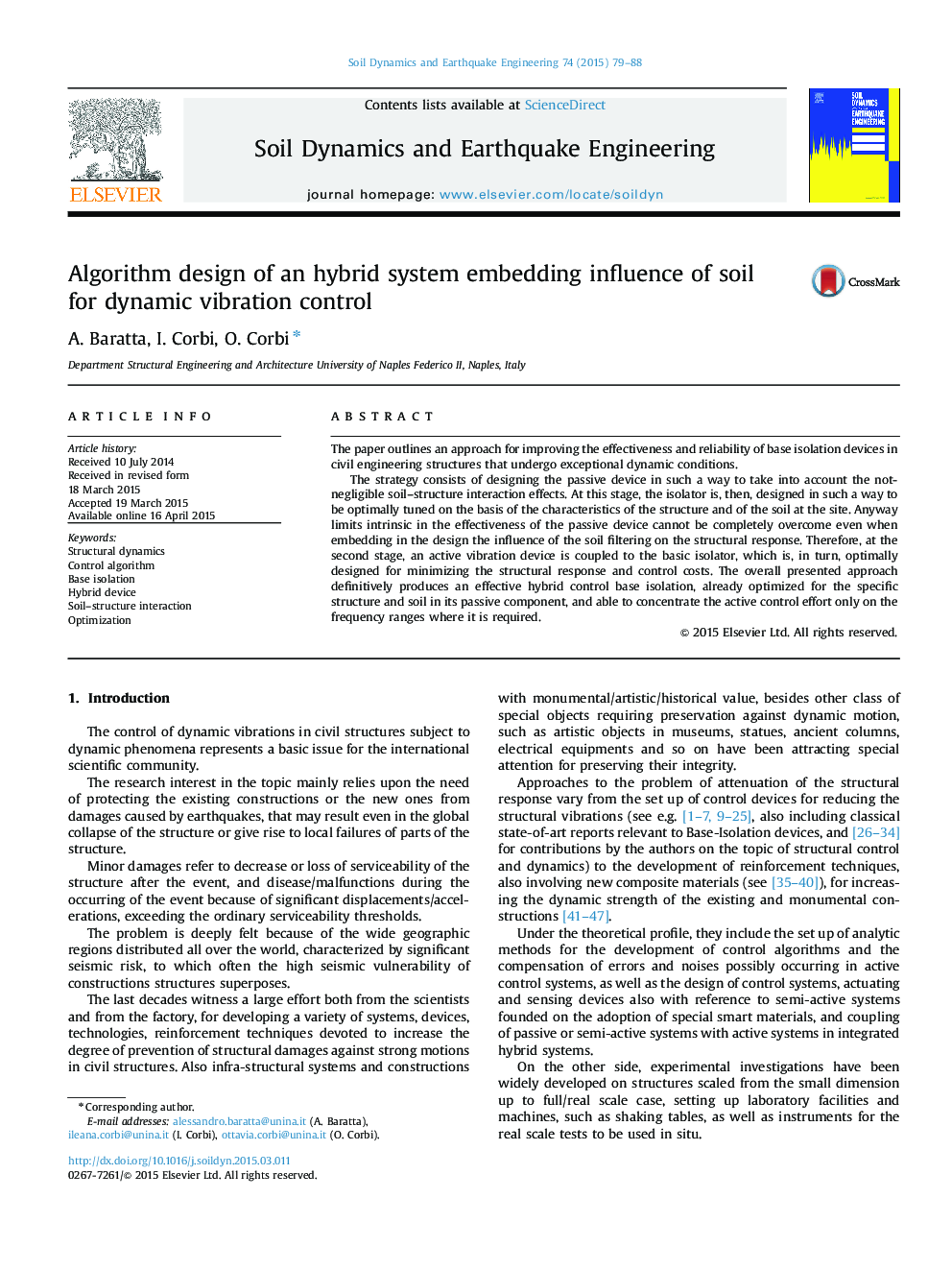| Article ID | Journal | Published Year | Pages | File Type |
|---|---|---|---|---|
| 303946 | Soil Dynamics and Earthquake Engineering | 2015 | 10 Pages |
•A passive Base-Isolation (BI) is optimally designed in relation to the subsoil properties.•The coupling with an active device is developed for preventing possible magnification effects.•A control algorithm is proposed that concentrates the control action in critical frequency ranges.•A significant improvement in the structure response is achieved by a low control action.
The paper outlines an approach for improving the effectiveness and reliability of base isolation devices in civil engineering structures that undergo exceptional dynamic conditions.The strategy consists of designing the passive device in such a way to take into account the not-negligible soil–structure interaction effects. At this stage, the isolator is, then, designed in such a way to be optimally tuned on the basis of the characteristics of the structure and of the soil at the site. Anyway limits intrinsic in the effectiveness of the passive device cannot be completely overcome even when embedding in the design the influence of the soil filtering on the structural response. Therefore, at the second stage, an active vibration device is coupled to the basic isolator, which is, in turn, optimally designed for minimizing the structural response and control costs. The overall presented approach definitively produces an effective hybrid control base isolation, already optimized for the specific structure and soil in its passive component, and able to concentrate the active control effort only on the frequency ranges where it is required.
